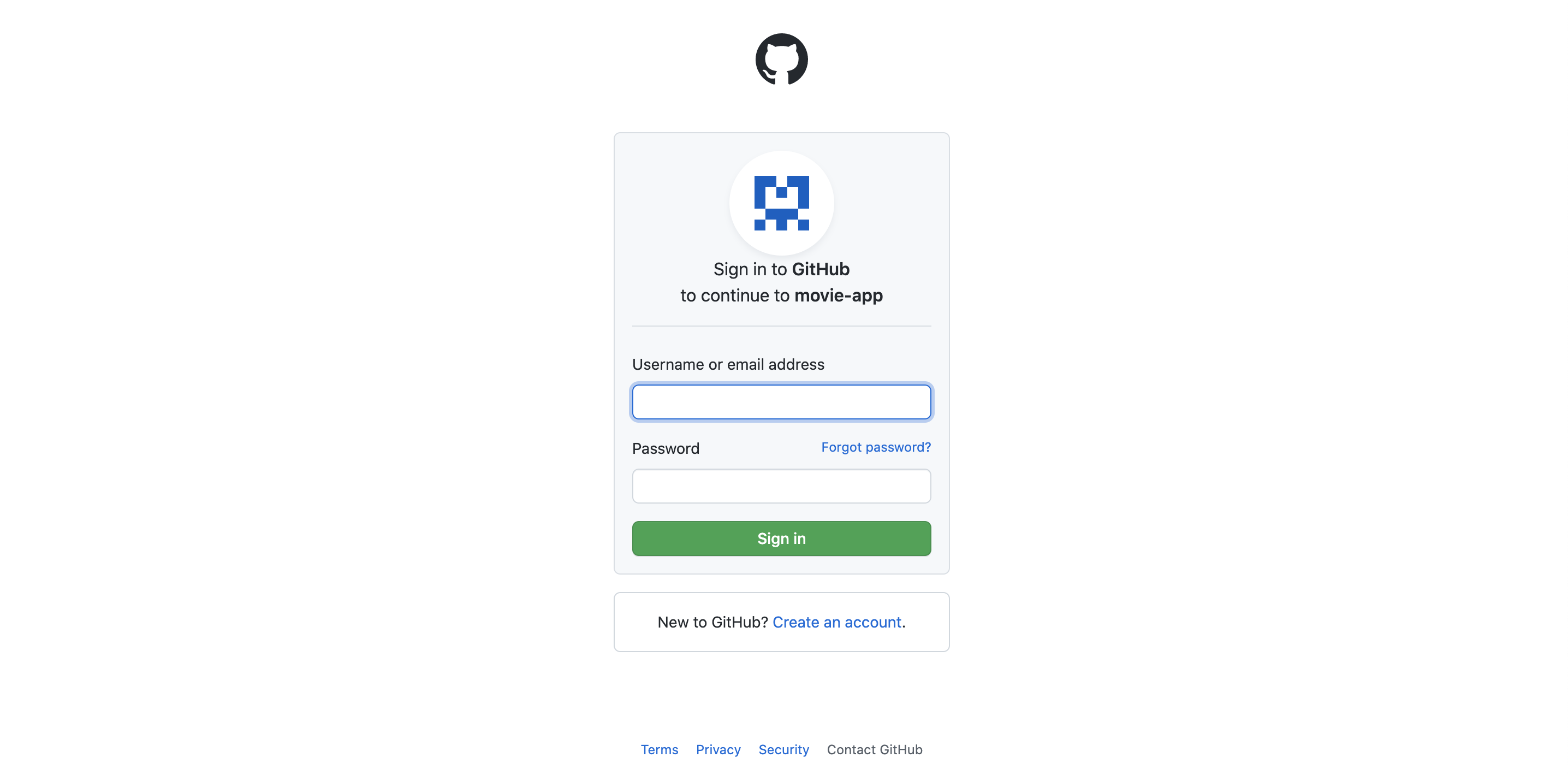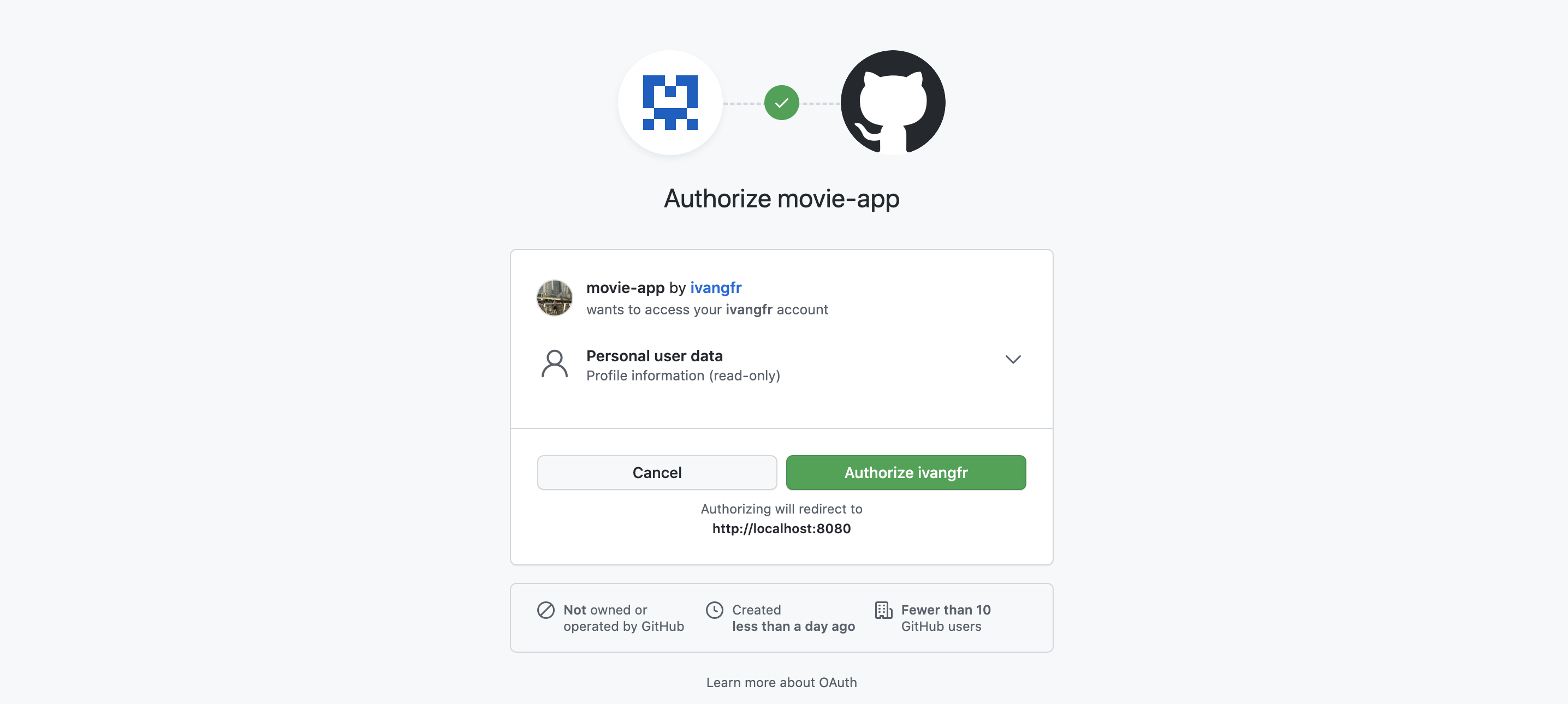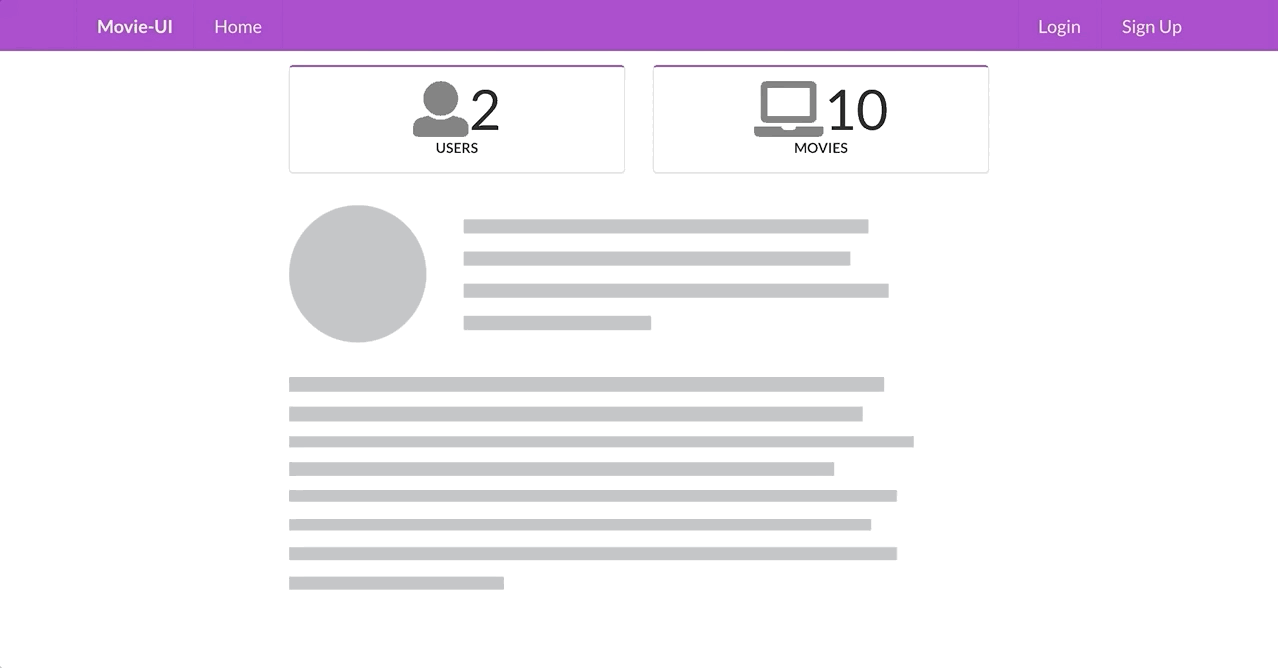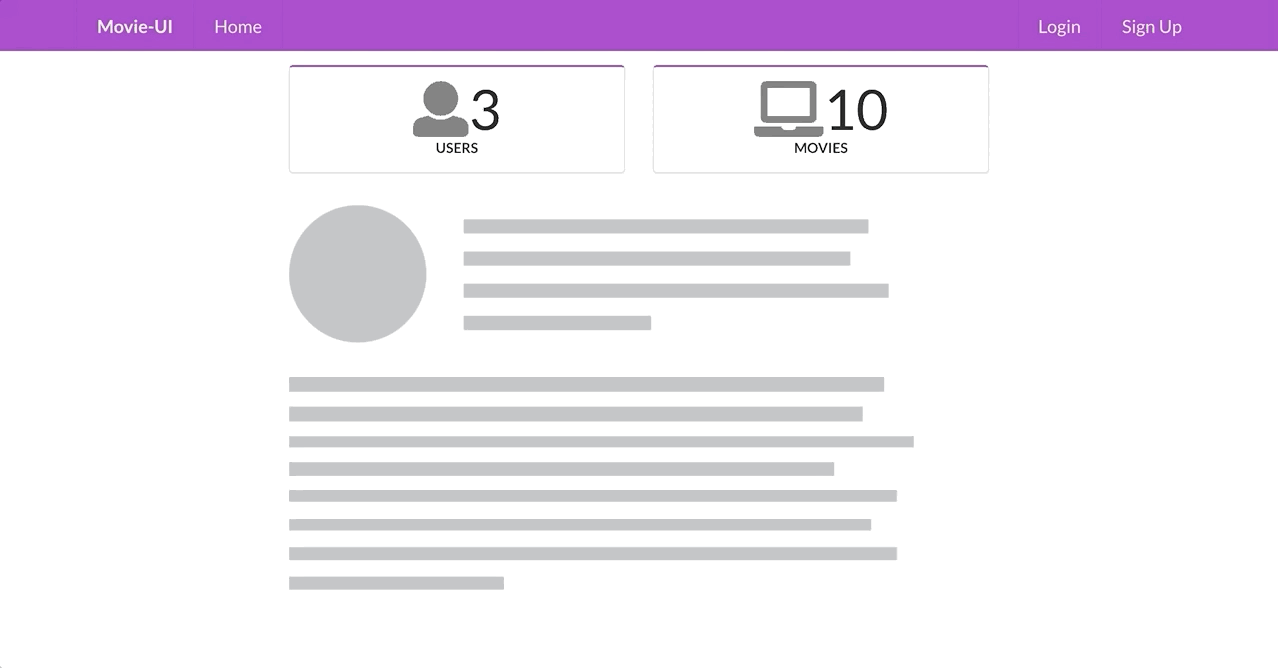The goal of this project is to implement an application called movie-app to manage movies. For it, we will implement a back-end application called movie-api using Spring Boot and a font-end application called movie-ui using ReactJS. Besides, we will use OAuth2 (Social Login) to secure both applications.
-
Spring BootWeb Java backend application that exposes a Rest API to create, retrieve and delete movies. If a user hasADMINrole he/she can also retrieve information of other users or delete them. The application secured endpoints can just be accessed if a valid JWT access token is provided.In order to get the JWT access token, the user can login using the credentials (
usernameandpassword) created when he/she signed up directly to the application.movie-apistores its data inMySQLdatabase.movie-apihas the following endpointsEndpoint Secured Roles POST /auth/authenticate -d {"username","password"}No POST /auth/signup -d {"username","password","name","email"}No GET /public/numberOfUsersNo GET /public/numberOfMoviesNo GET /api/users/meYes ADMIN,USERGET /api/usersYes ADMINGET /api/users/{username}Yes ADMINDELETE /api/users/{username}Yes ADMINGET /api/movies [?text]Yes ADMIN,USERPOST /api/movies -d {"imdb","description"}Yes ADMINDELETE /api/movies/{imdb}Yes ADMIN -
ReactJSfrontend application where a user with roleUSERcan retrieve the information about movies. On the other hand, a user with roleADMINhas access to all secured endpoints, including endpoints to create and delete movies.In order to access the application, a
useroradmincan login using his/herGithubaccount or using the credentials (usernameandpassword) created when he/she signed up directly to the application. All the requests coming frommovie-uito secured endpoints inmovie-apihave the JWT access token. This token is generated when theuseroradminlogins.movie-uiusesSemantic UI Reactas CSS-styled framework.
-
Github
In this link, it's explained how to create a Github App
Note: Other providers like
To explain how it works, we will use Github as OAuth2 provider example. However, this flow is similar to other providers. All the OAuth2 provider configuration is done in the application.yml. The oauth2Login configuration is done in WebSecurityConfig
-
The Social Login with
Githubstarts bymovie-appclient redirecting the user to the following URLhttp://localhost:8080/oauth2/authorization/github -
The OAuth2 provider will receive the request similar to
https://github.com/login/oauth/authorize?response_type=code&client_id=<CLIENT_ID>&scope=read:user&state=<STATE>&redirect_uri=http://localhost:8080/login/oauth2/code/github -
The user is redirected to the OAuth2 provider login form
https://github.com/login?client_id=<CLIENT_ID>&return_to=/login/oauth/authorize?client_id=<CLIENT_ID>&redirect_uri=http://localhost:8080/login/oauth2/code/github&response_type=code&scope=read:use&state=<STATE> -
User provide his/her credentials
-
User allows or denies the permissions to
movie-app-
If user denies permissions, the OAuth2 provider will redirect the user to the callback URL registered when creating the
movie-appwith an error.The component that handles it is the
Spring BootdefaultSimpleUrlAuthenticationFailureHandler. It can be customized if needed. -
If user allows permissions, the OAuth2 provider will redirect the user to the callback URL registered when creating the
movie-appwith theauthorization_codeThe redirect URL will be similar to
http://localhost:8080/login/oauth2/code/github?code=<CODE>&state=<STATE>Once received the redirect, Spring Security will exchange the
authorization_codefor anaccess_tokenand callCustomOAuth2UserServicethat will check (byusername) whether the user is present or not in themovie-appdatabase. If it is not present, a new entry for the user is created; otherwise, a few user information (likeimageUrlandemail) is updated.In the end, the component
CustomAuthenticationSuccessHandler, extendsSimpleUrlAuthenticationSuccessHandler, is invoked. It's responsible for creating a JWT access token and sending it to the user in theredirect_uri. We are using asredirect_uria url present inmovie-ui,http://localhost:3000/oauth2/redirect. The JWT token informed in theredirect_urias a query string, like it's shown belowhttp://localhost:3000/oauth2/redirect?token=eyJ0eXAiOiJKV1QiLCJhbGc...xaY0KWdqG2JDDk-iIrgIPDZvcA7Q
-
-
Open a terminal and inside
springboot-react-social-loginroot folder rundocker-compose up -d -
Wait for
mysqlDocker container to be up and running. To check it, rundocker-compose ps
-
movie-api
-
Open a terminal and navigate to
springboot-react-social-login/movie-apifolder -
Export the following environment variables for the
Client IDandClient Secretof the Social Apps (see how to get them in Creating OAuth2 apps for Social Login)export GITHUB_CLIENT_ID=... export GITHUB_CLIENT_SECRET=... -
Run the following
Mavencommand to start the application./mvnw clean spring-boot:run
-
-
movie-ui
-
Open another terminal and navigate to
springboot-react-social-login/movie-uifolder -
Run the command below if you are running the application for the first time
npm install -
Run the
npmcommand below to start the applicationnpm start
-
| Application | URL | Credentials |
|---|---|---|
| movie-api | http://localhost:8080/swagger-ui.html | |
| movie-ui | http://localhost:3000 | admin/admin, user/user or signing up a new user |
-
The gif below shows a
userloging in using theGithub -
The gif below shows an
adminloging in using his application account
-
Manual Test
-
Access
movie-uiat http://localhost:3000 -
Click
Loginand then, connect withGithub -
Provide your
Githubcredentials
-
-
Automatic Endpoints Test
-
Open a terminal and make sure you are in
springboot-react-social-loginroot folder -
Run the following script
./movie-api/test-endpoints.shIt should return something like the output below, where it shows the http code for different requests
POST auth/authenticate ====================== admin access token ------------------ eyJ0eXAiOiJKV1QiLCJhbGciOiJIUzUxMiJ9.eyJleHAiOjE1ODY2MjM1MjksImlhdCI6MTU4Nj..._ha2pM4LSSG3_d4exgA user access token ----------------- eyJ0eXAiOiJKV1QiLCJhbGciOiJIUzUxMiJ9.eyJleHAiOjE1ODY2MjM1MjksImlhdCIyOSwian...Y3z9uwhuW_nwaGX3cc5A POST auth/signup ================ user2 access token ------------------ eyJ0eXAiOiJKV1QiLCJhbGciOiJIUzUxMiJ9.eyJleHAiOjE1ODY2MjM1MjksImanRpIjoiYTMw...KvhQbsMGAlFov1Q480qg Authorization ============= Endpoints | without token | user token | admin token | ------------------------- + ------------- + ----------- + ------------ | GET public/numberOfUsers | 200 | 200 | 200 | GET public/numberOfMovies | 200 | 200 | 200 | ......................... + ............. + ........... + ............ | GET /api/users/me | 401 | 200 | 200 | GET /api/users | 401 | 403 | 200 | GET /api/users/user2 | 401 | 403 | 200 | DELETE /api/users/user2 | 401 | 403 | 200 | ......................... + ............. + ........... + ............ | GET /api/movies | 401 | 200 | 200 | POST /api/movies | 401 | 403 | 201 | DELETE /api/movies/abc | 401 | 403 | 200 | ------------------------------------------------------------------------ [200] Success - [201] Created - [401] Unauthorized - [403] Forbidden
-
- MySQL
docker exec -it mysql mysql -uroot -psecret --database=moviedb show tables;
-
To stop
movie-apiandmovie-ui, go to the terminals where they are running and pressCtrl+C -
To stop and remove docker-compose containers, network and volumes, go to a terminal and, inside
springboot-react-social-loginroot folder, run the command belowdocker-compose down -v
-
In a terminal, make sure you are in
springboot-react-social-login/movie-uifolder -
Run the following commands
npm upgrade npm i -g npm-check-updates ncu -u npm install



